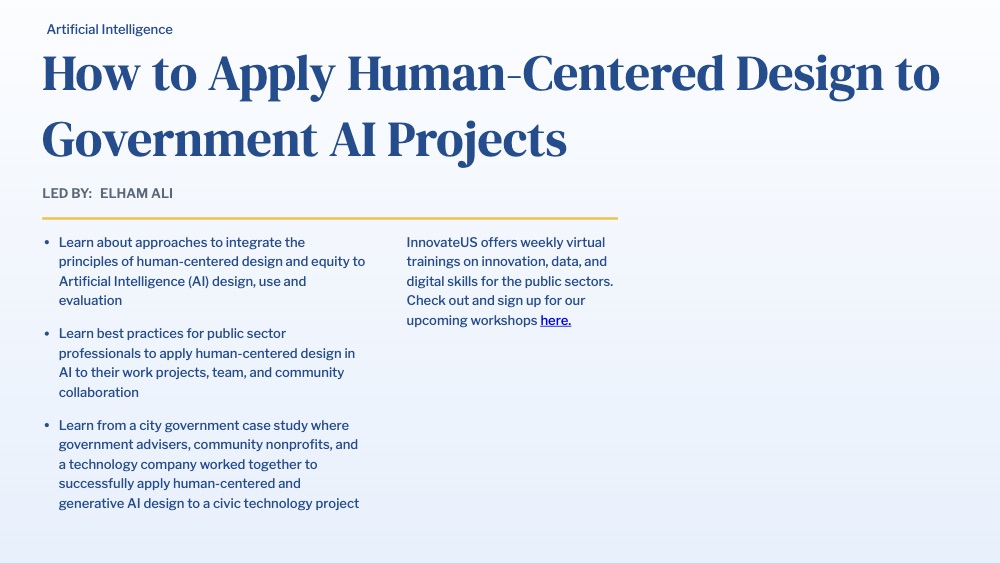Intended Audience: Federal/National Government: Agency
-

Research and Evaluation Practice Lead
This is a job description for the role of Research and Evaluation Practice Lead from the City of Philadelphia.
-

How to Apply Human-Centered Design to Government AI Projects
A workshop led by Elham Ali on integrating the principles of human-centered design and equity to Artificial Intelligence (AI) design, use, and evaluation.
-

Senior Research Designer
This is a job description for the role of Senior Research Designer from the City of Philadelphia Office of the Chief Administrator (CAO).
-

Interaction Designer
This is a job description for the role of Interaction Designer from the City of Austin.
-

Team Lead, Partnerships Business Development
This is a job description for the role of Team Lead, Partnerships Business Development from the Canadian Digital Service (CDS).
-

Senior Designer
This is a job description for the role of Senior Designer from the Canadian Digital Service (CDS).
-

Content Strategist
This is a job description for the role of Content Strategist from the 18F.
-

Senior / Principal Software Developer
This is a job description for the role of Senior / Principal Software Developer from the Canadian Digital Service (CDS).
-

Consulting Software Engineer
This is a job description for the role of Consulting Software Engineer from the 18F.
-

Contact Center Optimization Specialist
This is a job description for the role of Contact Center Optimization Specialist from the Centers of Excellence.
-

Design Director – Supervisory IT Specialist
This is a job description for the role of Design Director - Supervisory IT Specialist from the 18F.
-

Director
This is a job description for the role of Executive Director from the 18F.